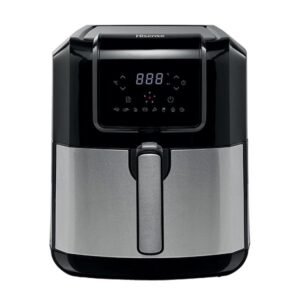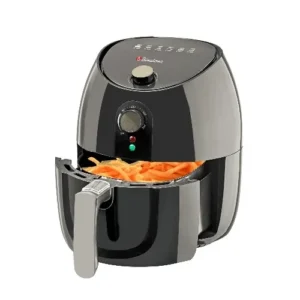Surveillance camera is a semiconductor imaging device, which has the advantages of high sensitivity, strong light resistance, small distortion, small size, long life, and anti-vibration. Surveillance cameras in security systems.
The generation of the image is mainly from the CCD camera at present, and the stored charge can also be taken out to change the voltage. It has the characteristics of anti-vibration and impact and is widely used.
On December 1, 2017, the “Specifications for English Translation and Writing in the Public Service Field” was officially implemented, which stipulated that the English name of the surveillance camera standard is: Surveillance Camera. By imaging color
(1) Color camera: It is suitable for identifying the details of the scene, such as identifying the color of clothes or scenes. Because of the color, the amount of information increases, and the amount of information is generally considered to be 10 times that of a black and white camera.
(2) Black and white camera: It is suitable for areas with insufficient light and areas where lighting equipment cannot be installed at night. When only monitoring the position or movement of the scene, a black and white camera with a resolution usually higher than that of a color camera can be selected.
By camera resolution
(1) Low-grade type with image pixels of about 250,000 pixels, color resolution of 330 lines, and black and white resolution of about 400 lines.
(2) Mid-range type with image pixels between 250,000 and 380,000, color resolution of 420 lines, and black and white resolution of 500 lines and below
(3) The image should be more than 380,000 dots, the color resolution is greater than or equal to 480 lines, the black and white resolution, and the high resolution of 600 lines or more.
By camera sensitivity
(1) Ordinary type: The illumination required for normal work is 1~3 (lux)
(2) Moonlight type: The illumination required for normal work is about 0.1 LUX
(3) Starlight type: the illumination required for normal operation is below 0.01 LUX
(4) Infrared illumination type: In principle, it can be zero illuminance, using infrared light source for imaging.
According to the size of the CCD target surface of the imaging element
(1) The size of the 1in target surface is 12.7mm wide X 9.6mm high and 16mm diagonal
(2) The size of the 2/3in target surface is 8.8mm wide X 6.6mm high and 11mm diagonal
(3) The size of the 1/2in target surface is 6.4mm wide X 4.8mm high and 8mm diagonal
(4) The size of the 1/3in target surface is 4.8mm wide X 3.6mm high and 6mm diagonal
(5) The size of the 1/4in target surface is 3.2mm wide X 2.4mm high and 4mm diagonal
(6) 1/5in is under development and has not yet launched the official product
In addition, CCD cameras are divided into PAL system and NTSC system, which can also be divided according to the image signal processing method or according to the camera structure.
Installation process editing broadcast
1. The rated voltage of the wire used for monitoring cameras should be greater than the working voltage of the line; the insulation of the wire should conform to the installation method of the line and the environmental conditions of the laying. The cross-sectional area of ??the wire should meet the requirements of power supply and mechanical strength.
2. When wiring, try to avoid wires with joints. Except for the use of joints, the joints of the camera must be crimped or welded, and the wire connections and branches should not be subjected to mechanical force. The wires going through the tube must not have joints under any circumstances. If necessary, put the joints on the probe terminals of the junction box as much as possible.
3. The wiring should be installed horizontally or vertically in the building. The wiring should be protected by casing (plastic or iron pipe, selected according to the technical requirements of indoor piping). The ceiling wiring can be made of metal hose, but it needs to be fixed securely and beautifully.
4. The signal line cannot be parallel to the high-power power line, nor can it be worn in the same tube. If it is limited by the environment, the parallel wiring should be kept away from more than 50cm.
5. The AC power supply of the alarm control box should be routed separately. The camera should not be placed in the same tube as the signal line and the low-voltage DC power supply line. The installation of the AC power supply line should meet the electrical installation standards.
6. The wiring from the alarm control box to the ceiling needs to be managed into the wall or protected by iron pipes to improve the anti-destructive performance of the anti-theft system.
7. There are two types of conduit wiring: bright and dark. The piping of the camera is required to be horizontal and vertical, neat and beautiful.
-17%
Smart Bluetooth Glasses Headset With Camera Wireless
Sku:
GE779CM37YYQPNAFAMZ
₦46,006.00 ₦55,707.00Save:₦9,701.00(17%)
Available in stock
Attention:
Prices on this site are constantly in review.
Orders are dispatched immediately upon payment confirmation.
Description
Reviews (0)
Ratings
0.0
0 Product Ratings
5
0
4
0
3
0
2
0
1
0
Review this product
Share your thoughts with other customers
Write a review
Be the first to review “Smart Bluetooth Glasses Headset With Camera Wireless” Cancel reply
You must be logged in to post a review.
Vendor Info
Vendor Information
- No ratings found yet!
More Products
- -35%Sku: GE779EA2EKYNYNAFAMZ
Mini Air Conditioner Ventilator Portable Hanging Neck Fan Usb
₦103,833.00₦159,755.00 - -98%
- Sku: LG AUD 9ON (Baba)
LG AUD 9RNC BABA All In One HiFi System, Xboom,1800 W RMS, Multi Bluetooth, DJ, Sparkle Lighting
₦504,000.00 - -35%Sku: GE415EA3ZGBOFNAFAMZ
Gelidi F805 Bluetooth Necktone Best Buy – High Quality
₦41,000.00₦62,999.00
Similar Products
- -6%
- -13%
- -12%
- -39%
- -29%
[wcboost_compare_button][wcboost_wishlist_button]
Share this item

















 No products in the cart.
No products in the cart.
Reviews
There are no reviews yet.